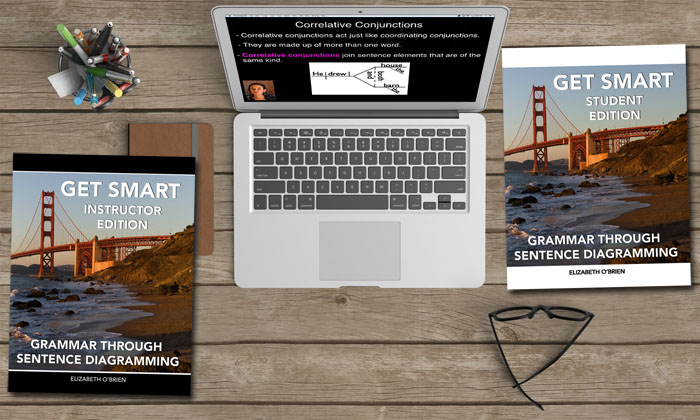Six Musts For Teaching Grammar
Six Musts For Teaching Grammar
- Home
- Teaching Grammar
 I love teaching grammar and spending time with my family.
I love teaching grammar and spending time with my family.Are you a teacher? Me too! These tips will make it easier for you to teach grammar.
Knowing grammar can improve our ability to think analytically and communicate confidently and effectively. It can also help us understand the language that shapes our world and our personal identities.
Grammar matters.
I hope that these six musts for teaching grammar will help make it an easier and more enjoyable subject for you to teach.
Here we go!
|
Would you like to download the free ebook so that you have this information at your fingertips? |
1. Motivate Them
No matter what subject you teach, it's important to motivate your students. If they don't already have a natural interest in something, they need to see why learning about it is necessary.
Tips for Motivating Younger Students (Middle School Students & Younger)
If you’re teaching grammar to younger students, short and sweet is the best way to motivate them. In fact, I suggest that you don’t even explicitly motivate them before you start teaching. Instead, motivate them through the teaching itself. This is done by teaching clear, understandable, and engaging lessons—with a smile if you can manage it. If students “get it,” they feel validated and they’re motivated to continue.
Teaching grammar with sentence diagrams is helpful for this younger group because learning to diagram is like learning a game. (This is discussed more in #6 below.) Most children have a natural interest in learning to diagram sentences because it’s so much like doing puzzles.
One other way to motivate this group is by encouraging them to share what they're learning with adults. Have you noticed that younger students love to correct adults and teach them something they didn’t already know? Students find this very motivating. (And many of us adults find this annoying!) However, use their interest to your advantage. As you teach, encourage students to “share” what they're learning with their parents or other adults. (Mom, do you know the subject of this sentence? I can show you how to diagram it.)
Tips for Motivating Older Students (High School Students & Older)
Getting older students motivated can be a longer process if you’d like it to be. You can engage them in a discussion of whether or not grammar matters and why. Here are three more specific ideas to help your discussion.
- Show them our feature-length documentary about grammar instruction. You'll hear from students, teachers, professors, linguists, and others about grammar and grammar instruction. I promise that you'll find it interesting and inspiring! You can stream it free here.
- Older students are closer to the “real world” than younger students, and they have more of an interest in their future careers because of that. You could have a discussion about grammar as it relates to job prospects. Search online for “Kyle Wiens grammar,” and you’ll find the article "I Won’t Hire People Who Use Poor Grammar. Here’s Why." This article is a good way to spark a discussion.
- Many dating sites have found that bad grammar is a deal-breaker for almost 50% of users! If you’re teaching grammar to older students or adults, this might be a good way to motivate them since most people care about finding a potential mate. Search online for “grammar and dating,” and you’ll find many articles that could help spark a discussion.
If you’re uncomfortable facilitating these kinds of discussions, students can also become motivated by your clear and enthusiastic teaching. So, don’t feel like you must have one of these discussions before you get started. You could also just briefly mention these facts and then start your lessons.
If you want to do that, here’s a script that you could use.
The way you present yourself to the world matters. Whether we like it or not, people judge us based on our writing and speaking. Many employers look at a candidate’s grammar as a reflection of his/her ability to perform a job well… and grammar even matters in the dating world. Many online dating sites have found that poor grammar is a deal-breaker for about half of users. Whether or not you agree with people making these judgments, I want to prepare you for success in the world, so we’re going to start learning grammar. Then, you can present yourself to the world in the best light possible, and I will have done my job.
After you say that, get started with your teaching!
2. Start From The Beginning
This one is really important. In fact, teachers breaking this rule usually do more harm than good.
You need to make sure your students have a solid understanding of the basics before you move to more abstract concepts.
You
might teach all of the right things to your students, but if you don’t
do it in the right order, none of that matters. In fact, it’s a recipe
for disaster.
If you needed to drive somewhere that you had never been before, you
would probably hop in the car and use your phone's navigational system
to give you step-by-step directions from wherever you started to
wherever you wanted to go.
You would expect your phone to give you, not only the right directions, but the right directions in the right order.
But what if it gave you all of the right directions in the wrong order? That would be less than useless. You would have spent time and energy driving, but you wouldn't end up anywhere near your destination. You feel tired, frustrated, and defeated.

You would probably also blame your phone for giving you the wrong information. However, it didn't give you the wrong information. It gave you all of the right information in the wrong order.
We all know that for directions to make any sense, they need to be given in a particular order. Well, the same thing is true for teaching grammar. Grammar makes sense when it's taught in a certain order, and it can be very confusing when it’s taught in a haphazard manner.
In the free PDF version of this article that you can get below, I'll share a chart from our Get Smart Grammar Program that details the order in which we teach grammar concepts. Feel free to use it with your students. (The only reason that I'm not sharing it directly on this page is that it's a long chart, and it would take up a lot of space here.)
3. Be Prepared
It's a bad feeling to be standing in front of a class lecturing about a topic that you have very little understanding of. Learn the content ahead of time so that you can confidently teach your students.
This is easier said than done when it comes to grammar because, although many teachers know that grammar is important to teach, they themselves don’t know grammar. If that’s you, don’t worry.
The trick is to remember that you don't need to know everything at once. Focus only on the content in the lesson you're giving that day. And don’t go overboard. You don’t need to read every book chapter and blog post about each topic. Just prepare enough so that you feel confident about the limited topic that you’re teaching that day.
If you're teaching grammar concepts in the right order and you start from the beginning, you never have to do a bunch of scrambling because you yourself have already taught your students the supporting material for each new concept.
For example, if you’re teaching grammar concepts in the right order, you would teach adjectives and adverbs before you teach prepositions. This is because prepositional phrases act as adjective and adverbs. However, if you try to cover prepositions before you cover adjectives and adverbs, you’ll be scrambling to prepare, and your students will be confused!
Here’s a more obvious example. You would be sure to cover adjectives, subjects, verbs, and clauses before you covered dependent adjective clauses. If you did this, you (and your students) would know the background information you needed in order to understand dependent adjective clauses.
The only thing you would need to prepare and understand ahead of time would be the concept of dependent adjective clauses.
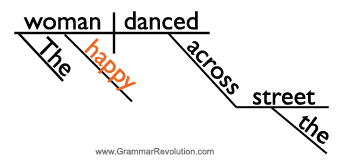
happy = adjective
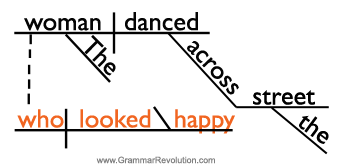
who looked happy = adjective clause
However, if you tried to cover dependent adjective clauses before you covered all of the background information, you would have a lot to look up. Not only would that hard for you, but that wouldn’t bode well for your students either.
Remember that if it’s hard for you to prepare, it will probably be hard for them to understand. (Why? It means that some foundational knowledge for the new concept was probably missing from prior lessons.)
4. Don't Fake It
Newsflash: You don’t need to know everything.
It’s easy to feel like we, as teachers, should have immediate answers to all of our students’ questions. We’re scared that telling students we don’t know the answer will somehow make us less credible to them (and to our colleagues).
But knowing all of the answers isn’t practical. Most subjects are wide and deep, and it would take years to become a true expert in them. And, contrary to what your instincts might tell you, admitting that you don’t know something can show others that you have confidence in yourself and your ability to learn new things. If your students ask you questions that you don't know the answers to, you can say, "I don't know. I'll look into it and get back to you tomorrow."
You don’t need to be an expert. If grammar is new to you, focus on understanding the concepts that you'll be teaching in the near future. You don't need to know everything before you begin teaching something. In fact, not knowing everything can be an advantage.
When something is new to us, learning more about it can be exhilarating. We go through a honeymoon-like phase with the subject. This means we’re excited and passionate about the topic, and that excitement shines through us as we teach. We genuinely have a feeling of sharing something interesting as we’re teaching, and students pick up on that.
For some “experts,” mustering that same energy for a subject that is old to them can be very challenging. Embrace your rookie status as you start teaching grammar!
5. Do Fake It
If you dislike grammar, try not to show it. Your students will pick up on your grudge, and they'll start to have the same feelings about it. That will make it hard for you to teach and hard for your students to learn.
Do your best to focus on some aspect of grammar that you find valuable and interesting. Try to convey a sense of enthusiasm, if possible.
I like to think of this advice that Maria Montessori gave to future teachers.
You yourselves must be filled with wonder.

If you're teaching grammar with sentence diagrams, you shouldn't have to fake enjoyment for too long before you actually start to like grammar!
Speaking of sentence diagrams...
6. Use Sentence Diagrams
Teaching grammar by diagramming sentences is a great way to get students engaged in what they’re learning. Creating a sentence’s diagram is kind of like solving a puzzle. You get to be a word detective and figure out how the words in a sentence are functioning, and then you get to show that in a picture.
If you’re not familiar with sentence diagrams, they are basically lines and words that show the grammatical relationships among the words in a sentence.
For example, interjections are words that are not grammatically related to the rest of the sentence. We show that in a sentence diagram by having the interjection float on a line above the rest of the sentence. This shows students that interjections are not grammatically connected to anything else.
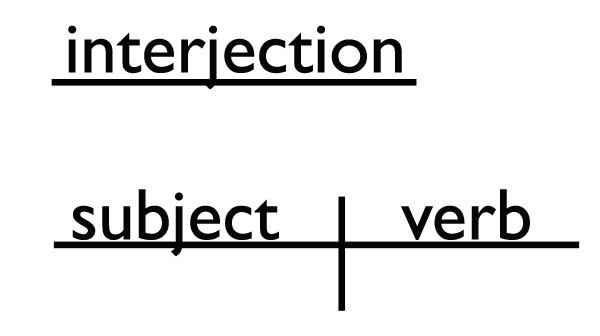
As you can see, I love sentence diagrams. But, having students who can diagram sentences is not my goal. My goal is to help students understand language, and that's probably your goal too. Diagrams can be an excellent tool for developing your students' understanding of language, but you also need to make sure that your students can explain everything happening in the diagram.
Some students are excellent at following patterns, and they can diagram sentences without knowing why they are doing what they are doing. Look at this diagram. The sentence is diagrammed perfectly, but can the student explain the grammar of the sentence?
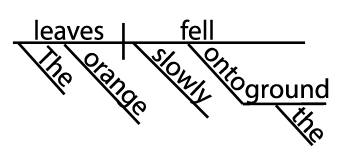
The orange leaves slowly fell onto the ground.
If you start from the beginning, you're teaching grammar concepts in the right order, and you use sentence diagrams, here is an example of what should be going on in your students’ minds when they diagram that sentence:
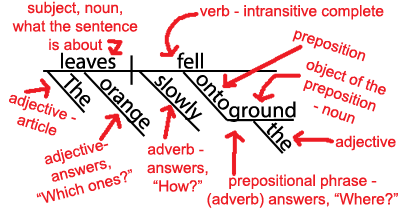
The best way to check for this comprehension is to ask students some why questions.
- WHY did you put the prepositional phrase under the verb?
- WHY is orange diagrammed under leaves?
- WHY is slowly diagrammed under the verb?
It would be impractical to ask students WHY questions about every sentence that you diagram. However, it's helpful to sprinkle these kinds of questions throughout your lessons. In our Get Smart Grammar Program, we have students fill in charts for each sentence diagram. This is another way to check for comprehension. I love using charts because the charts hold the students accountable rather than the teacher having to personally hold each student accountable. (I'll share a couple of example charts in the free PDF download of this article.)
7. One More Thing (If It's Right For You)
Our step-by-step program for teaching grammar clearly
lays everything out and allows you to move at your own pace. It's the program I wish that I had when I was teaching grammar in the classroom. (Now I only teach online.) Our
Get Smart Grammar Program is presented in a logical sequence, so it's not an
overwhelming mishmash of information.
It includes video lessons, sentence diagramming exercises, periodic quizzes, and answer keys for you to check work. You can teach grammar in just ten minutes a day, and you won't have to plan a thing because it's all done out for you.

Hello! I'm Elizabeth O'Brien, and my goal is to get you jazzed about grammar.
I am a TESOL instructor, and although I know when a sentence isn't right, I couldn't explain why. Teaching grammar was my biggest fear about starting this career. You have helped so much in reducing that fear!
- Sue, TESOL Teacher

DOWNLOAD THESE TIPS
Receive regular lessons, tips, and videos about grammar. You can get started today with Six Musts for Teaching Grammar.
I respect your privacy and take protecting it very seriously. You can view our privacy policy here, and you can easily unsubscribe at any time.
This is original content from https://www.english-grammar-revolution.com/teaching-grammar.html
